Slovenia 2020
A Slovenian Summer Dream
In August, I decided to travel to Slovenia with two friends and former colleagues. After our stop-over for one night in Augsburg, we arrived in Kranjska Gora after a long journey through Germany and Austria. The municipality is close to the Austrian and Italian borders and is well known as resort and winter sport destination.
We started our trip in Slovenia with an adventurous hiking round trip. Through a path in the forests of the Triglav National Park, we reached the road to the top of the Vršič Pass, the highest pass in Slovenia, which connects Kranjska Gora and the Trenta Valley. Unfortunately, the weather changed - it began to be foggy, rainy and cold and we still had to walk to reach the alpine hut on the top at 1611 metres. We really hoped to have a beautiful view over the Julian Alps, but the fog prevented us from having a good view. But instead of waiting too long, we decided to continue the hiking round trail, because we still had three hours to hike to arrive at our starting point.
The real adventure started now, when we had to climb over rocks and hiked around steep meadows. The stones were really slippery and we also had to use ropes to climb at steep mountain passages. But the adventure was worth it, when the fog disappered and the rain stopped, so that we could enjoy the beautiful panoramic view over the Slovenian Alps. I really felt in love with the amazing nature and surrounding mountains. Then, we continued and came back to the forrest part of the round trail, where I slipped on a root and hit a stone with my elbow, but luckily nothing bad happened, shortly before we reached the starting hut.
At Lake Jasna, we also didn't have luck with the weather and we couldn't see the beautiful mountains in the background, but the fog gave the lake a mystical atmosphere. We walked along the two interconnected artificial lakes and on the one end of the lake, a bronze statue of an Alpine ibex on a natural rock was erected.
The next destination was the Soča valley, close to Bovec, where we had a beautiful and calm apartment in the nature. The owner of the house, "Lado", welcomed us with a homemade apple brandy and a bottle of fresh mountain spring water. He also gave us the advice to visit the Soča Canyon, close to the house. The emerald green cascades intertwine to form the 750 metres long, only a few metres wide gorges, which open into deep green-blue pools at the end. We walked the path along the canyon and reached a place where we could go directly to the water, which was unbelievable cold. After taking a few pictures, we continued the path to cross a bridge for walking back to our apartment on the other side. Lado also gave us an advice, where we could go for having dinner and eating fresh brown trouts.
After a heavy summer thunderstorm during the night and being scared by a giant moth at our window - it was bigger than my hand - we went to Bovec the next morning, first to explore the city, but mainly to go to the meeting point of "Hungaroraft". The crew drove us to the starting point of our Wild Water Rafting tour at the Soča river. It was my first time to do this rafting adventure and I really loved it.
We took the chance to join an Oil Tasting at a Morgan olive farm in Grintovec, a village on the ridge above the Drnice vallley near Šmarje. At first, the guide told us a lot about the history of the olive farm and the production of different kinds of olive oil, made out of green and black olives. At the farm, the indigenous Istrian olive variety Belica predominates in the olive groves with more than 1000 trees.
For the olive oil production, undamaged fruits are processed on the same day in the most modern oil plant by mechanical methods under strict rules for processing olives from organic production. After processing, the olive oil is filtered to remove the last residues of solid particles and water. Until being bottled, the olive oil is stored under controlled conditions to achieve a high quality and durability of the oil.
After learning a lot about the olive farm, we were ready to taste the different olive oils. The taste of the olive oils was fresh and fruity, with pronounced bitterness and spiciness. The fruity aroma was reminiscent of olives, apples and fresh grass. The bitterness and spiciness were in beautiful harmony and combined the taste of almonds. With adding other ingredients, the oil gets a broad aroma spectrum (lemon, orange, chili, truffles, garlic, roses). The most surprising thing was, that the vanilla ice cream at the end of the tasting was topped with orange oil and that it tasted really delicious together.
On our way from Piran to Ljubljana, we stopped at the Cave of Postojna, the second-longest cave system in Slovenia. The visit of the magnificent cave started with a four kilometre long journey on the world's only double-track cave railway. All around were beautiful cave formations, which gave the whole area a fairytale atmosphere. The most famous cave formation and the symbol of the Postojna Cave is the five metre tall bright white stalagmite called Brilliant. At the end of the cave, we could also see a baby dragon, which is a kind of olm, which is the largest cave-dwelling animal that can survive without food for up to ten years. For me, the Postojna Wonderland was the most spectacular cave system, I've ever visited, because all kinds of stalagmites and stalactites were so impressive and due to their different colours, they were really beautiful.
A few kilometres away from Postojna Cave, we also visited the Predjama Castle, a Renaissance castle built within a cave mouth in the 12th century. We only took pictures from outside of the largest cave castle in the world, so we also couldn't see the secret tunnel system with the bats colonies.
Arrived in Ljubljana, we went to the Fridays street food market at the Central Market with plenty of modern and exciting delicacies from all over the world. On the street food market, we also tried the famous Slovenian Orange Wine for the first time.
The symbol of Ljubljana, also known by the German name Laibach, is the Ljubljana Dragon, which is depicted on the top of the tower of the castle in the Ljubljana coat of arms and on the Ljubljanica-crossing Dragon Bridge, one of the most known bridges, also including the Butchers' Bridge, the Triple Bridge and the Cobblers' Bridge. By crossing the Triple Bridge, we arrived at the Prešesren Square, the central square and meeting point of our Free Walking Tour. We walked through the beautiful old town of the city and also passed the market around the cathedral, which is worth seeing, especially on Saturdays. On the market we bought Slovenian honey and honey liqueur. We continued the walking tour and passed the Town Hall and the Ljubljana Cathedral, which is decorated with Baroque frescos. On our tour, we could also see the 1774 established National and University Library, one of the most important national educational and cultural institutions of Slovenia.
After the Free Walking Tour was finished, we decided to walk to the autonomous social and cultural centre called Metelkova. Formerly, the site was the military headquarter of the Army of the Austro-Hungarian Empire and the Yugoslav National Army, nowadays, the military barracks are the home for artists and students from the Academy of Theatre, Radio and Television. The art around the Metelkova was kinda bizarre, but also interesting and definitely worthwile to see.
Ljubljana is also a paradise for food lovers. Not only the street food market or the cafés along the river are totally amazing. In Ljubljana, I had the chance to try the Slovenian "Prekmurska Gibanica", a layered pastry containing poppy seeds, walnuts, apples, raisins and quark fillings. In 2010, the EU gave the Slovenian Gibanica cake a Protected Geographical Status within Europe. We also really enjoyed a creative and delicious three-course-lunch at the "Monstera Bistro". I started my menu with a cold cucumber soup with water melon, feta cheese and flower blossoms. As main dish, I chose ox cheeks with vegetables and smoked mashed potatoes and for the dessert, I wanted to eat chocolate mousse with white chocolate crisps and blueberry ice cream. It's definitely an insider tip to go there for having lunch at least once while staying in Ljubljana.
One of the main sights is the medieval Castle of Ljubljana with its Romanesque, Gothic and Renaissance architectural elements. From the castle tower, it was possible to have a nice view of the city and the inner courtyard of the castle. We tried to explore all the places inside the castle and we could also visit the Museum of Puppetry and could get to know some Slovenian fairytales.
Our last destination of our trip in Slovenia was the town of Bled with the famous Lake Bled. In Bled, we first took the chance and went swimming in the lake. After
cooling off a bit and enjoying the peace and calmness by the lake, we
started our hiking adventure to the Ojstrica and Mala Osojnica viewpoints. These paths were very steep and exhausting, but the view was also breathtakingly beautiful. We could enjoy a wonderful panoramic view over the entire Lake Bled with the Bled Island and the castle with the Alps mountains in the background. The region also had a lot to offer in culinary terms. A highlight of the region is the famous Bled cream slice- also known as "Blejska kremšnita" or "kremna rezina").




























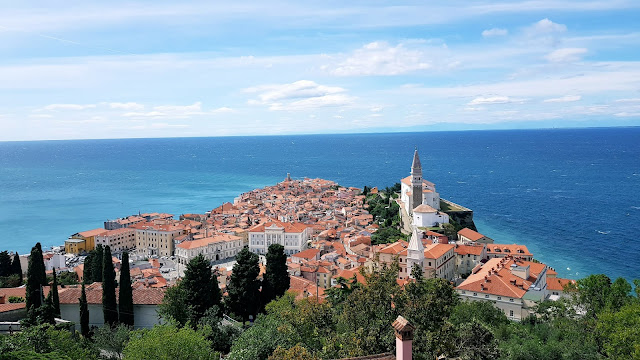





















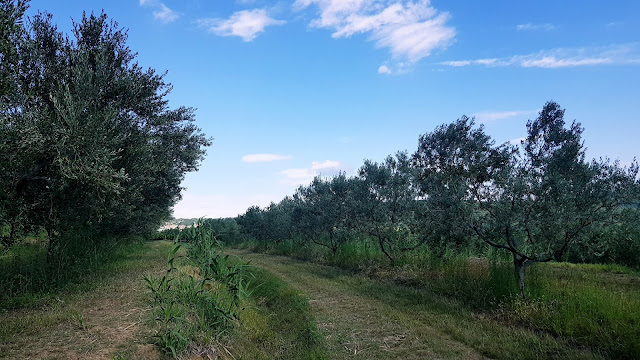





































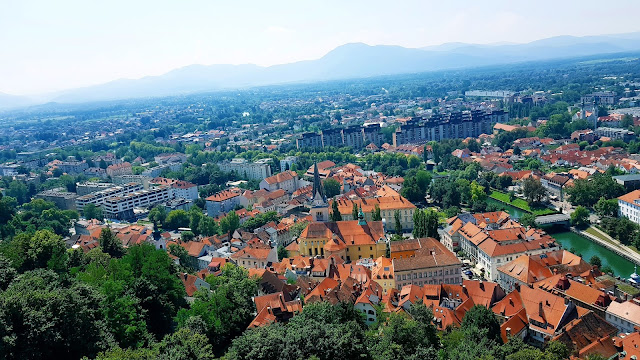







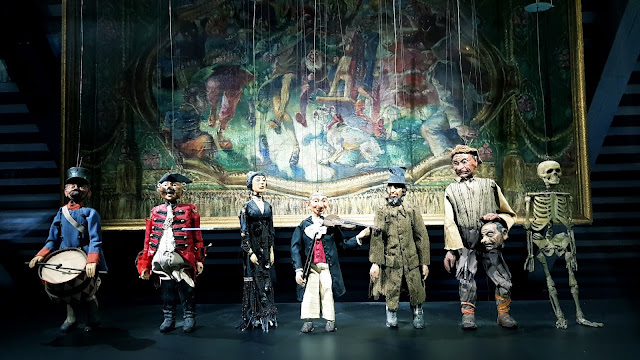









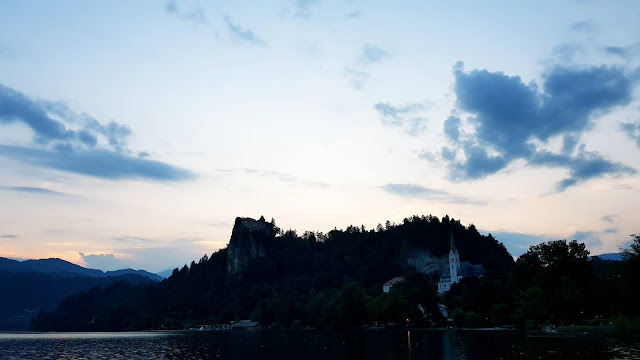














Comments
Post a Comment